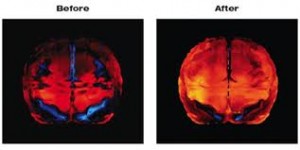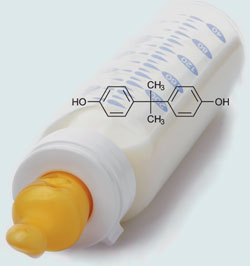Introduction
In mid December 2012 I attended a conference, which taught me to avoid mistakes by looking at the brain carefully. Doing this avoids missed diagnoses and treatment failures. In midf December 2012 I attended a medical conference in Las Vegas. The American Academy for Anti Aging Medicine organizes this annual event and provides fascinating topics. It gives information about the newest diagnostic methods and presents treatment options that reach beyond the borders of conventional medicine. One morning lecture, which took place on December 14, 2012 was given by Dr. Daniel Amen. It was an unforgettable session for the large audience, which filled the main auditorium. Dr. Amen is a psychiatrist, and he explained in detail the importance of a correct diagnosis for psychiatric problems. One diagnostic tool is the SPECT scan.
SPECT scan as a tool for psychiatric patients
It is not just some sophisticated scanning method that shows interesting images of the brain. But it provides detailed information, which part of the brain has an abnormality. As a result, a trained specialist will be able to classify, which treatment option would yield the best result to help the patient who may have a form of depression or other psychiatric disorder. A pill such as Prozac is not the miracle cure for all forms of depression! Detailed scan information prevents treatment failures. This can make a big difference in a patient’s life as he/she can lead a healthy and productive life. However, contrast this to a patient who did not receive help, is in an institution, hurt others, killed in a rage or took his own life.
Application of SPECT scans
The SPECT scan depicted here is from a patient who suffered from Lyme disease, but his treating physicians at first did not believe him. It was only after the abnormal SPECT scan on the left that further more sophisticated tests did prove Lyme disease was present and extensive antibiotic treatment cured the lad (normal SPECT scan on the right).
A case of a “conduct disorder”
Mental problems present in frightening ways, as the lecturer explained in the case of a young boy with behavioral changes that were terrifying to his family. Previously an easy-going lad, he turned into a challenge for his family and his teachers. He bounced from specialist to specialist. They diagnosed him with various conditions. The specialists stated that he was manipulative and attention-seeking. They also assumed that he was hyperactive and had a learning disability. The term conduct disorder also came up for discussion. But nothing of that helped to improve the situation. The parents felt like they were losing their child that was on a downhill course and on a destructive path.
SPECT scan helped to solve the “conduct disorder”
Finally, a SPECT scan did reveal a previously overlooked condition: the boy had a cyst on the frontal lobe of his brain. It looked like a trench that prevented the frontal brain to communicate with the rest of the brain. He did need surgery in order to remove the enlarging cyst (pull down to see images), which was not an easy surgical procedure. However, the scan result led to the identification of the problem. This patient – in the meantime a young adult – is no longer troubles with psychiatric problems. He holds a job, has good interpersonal relationships and functions like any normal individual of his age group. Overlooked, undiagnosed and not properly treated mental disease robs people of their ability to lead full and productive lives. Patients with mental illness also represent a large number of the prison population.
Distorted mind of shooters
The lecturer briefly stopped and mentioned that we may have heard of the tragic and unfathomable events in a Connecticut school. A 20-year old shooter killed 20 (we all know this now as the Sandy Hook Elementary School shooting in Connecticut). A somber silence settled over the audience. As most of them had been attending conference lectures all morning, they had not heard about the school shooting and would see the shocking details on the news channels only later that day. For a whole nation December 14, 2012 will be etched into memory as a day of horror, of evil, lives destroyed and hearts broken.
Importance of detecting and treating mental disorder early
For those who attended this lecture they will be reminded permanently that mental disorders need effective diagnoses and persistent treatment. Mental illness was hiding behind closed doors in the past. It was a source of embarrassment and shame, and denial was common in order to keep a pleasant facade. The consequences can be a source of terrible suffering. This starts with the patient and his family. But as seen a few days earlier it reaches into the community and beyond.
More information on mental illness: http://nethealthbook.com/mental-illness-mental-disorders/








